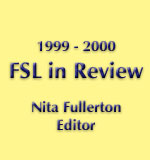|
|


Introduction
Systems Development
|
|

Objectives The Systems Development Division provides technical expertise in support of the laboratory's development of real-time meteorological workstations. It produces the basic system design and implements many portions or all of the design. Major components of a workstation are the interactive display and user interface, the database management, on-demand and scheduled applications, and real-time data acquisition. The division uses the latest software development techniques and system technologies in developing the meteorological forecast systems. A major activity continues to be the development of the FX-Advanced workstation, which includes the Local Data Acquisition and Dissemination (LDAD) subsystem. (Figure 40 shows a screen from the LDAD system.) The workstation technology developed within SDD is transferred to many domestic and international agencies, such as the National Weather Service (NWS), Taiwan Central Weather Bureau (CWB), and Korean Meteorological Administration (KMA).
The division comprises two branches and one science advisory group:
Data Acquisition and Dissemination Systems Branch – Utilizes object-oriented technology to develop local data acquisition and advanced weather dissemination for modernized Weather Forecast Offices. Dissemination decision support systems offer easy-to-interpret information of rapidly evolving weather events for emergency preparedness agencies that typically lack meteorological expertise. Scientific Applications Group – Develops and implements scientific software systems designed to improve weather forecasting by taking advantage of opportunities offered by recent advances in meteorological observations and information systems.
|
|

